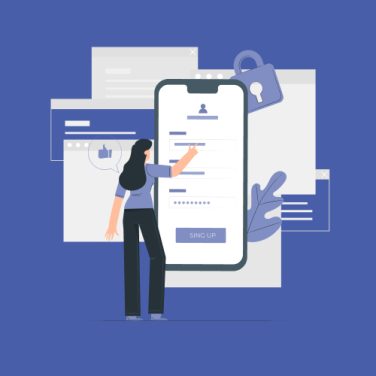The HRIS login is the gateway for employers, employees, and IT teams to access human resources information system modules. It verifies user identity, grants secure access to personnel data, payroll functions, benefits details, and reporting dashboards.
Employers rely on the HRIS login to streamline administrative tasks and delegate permissions. Employees use the login to manage personal profiles and request time off. IT and security teams oversee authentication settings, monitor event logs, and enforce policy compliance.
A robust HRIS login flow prevents unauthorised entry and ensures compliance with privacy standards across distributed workforces.
What is an HRIS login?
An HRIS login refers to the authentication sequence that grants access to an organisation’s human resources information system. Users enter a unique user ID or employee number followed by a password, which the system validates against its user directory.
Successful verification triggers session initiation, loading personalised dashboards and self-service features. The login mechanism supports role-based access control, ensuring managers, HR administrators, and staff see only approved modules.
This secure entry point maintains data integrity for core HR processes like employee onboarding, time tracking, and benefits enrolment.
Why secure login matters
Protecting employee information and payroll records is vital for compliance with data security regulations such as GDPR, HIPAA, and CCPA.
A weak HRIS login exposes personal data to breaches, phishing attempts, and fraudulent access. Strong authentication controls reduce support requests and mitigate risks of internal and external threats.
Implementing robust password policies and real-time threat detection technologies prevents lateral movement by attackers. Adaptive risk scoring can dynamically challenge high-risk logins with stronger verification steps. Centralised monitoring of login attempts helps IT teams detect anomalies in real time.
Organisations can further reinforce HRIS security by integrating multi-factor authentication and SSO for HRIS capabilities. For a deeper dive into overall HRIS fundamentals, refer to our comprehensive guide to human resources information systems.
Setting strong password policies
Setting strong password policies is the foundation of a secure HRIS login. A robust password framework balances complexity and usability, ensuring compliance with industry standards.
Password rules should cover length, character variety, prohibition lists, and expiration. Automated enforcement within MiHCM Lite and Enterprise applies these rules consistently, reducing manual configuration errors.
Password complexity and expiration
- Minimum length: at least 12 characters to resist brute-force attacks
- Character variety: require uppercase, lowercase, numeric, and special symbols
- Prohibition lists: block common or previously breached passwords
- Password expiration: enforce rotation every 60–90 days based on risk profile
Regular password rotation reduces the window of exposure for compromised credentials. HR managers can customise expiration intervals in MiHCM Enterprise to align with regulations such as ISO 27001. Automated notifications remind users to update passwords before expiry, avoiding sudden lockouts.
Integration with MiHCM Lite and Enterprise simplifies policy enforcement. Administrators define a global password policy once, and the system synchronises settings across all HR modules. The self-service portal automatically rejects non-compliant passwords and guides employees through creating stronger credentials.
Audit logs capture password changes, failed attempts, and policy violations. HR and IT teams can review these logs via Analytics modules to identify trends. Alerts trigger when multiple incorrect entries occur, indicating potential credential stuffing attacks.
Educating employees on secure password creation and storage is key. Provide guidelines on avoiding reused passwords and discourage credential sharing.
Compliance requirements demand strict control over personal data. Enforce immediate password resets upon suspected compromise.
By adopting a layered authentication framework that starts with a strong password policy, organisations enhance their overall HRIS security posture. Combining these measures with multi-factor authentication and optional SSO for HRIS creates a resilient defence against unauthorised access, keeping employee data safe across the enterprise.
Implementing Multi-Factor Authentication
Multi-Factor Authentication (MFA) is essential for reinforcing HRIS login security. By requiring a secondary verification factor—such as a one-time code, biometric scan, or push notification—MFA mitigates risks associated with compromised passwords.
Strong MFA adoption protects personal data, payroll details, and benefits information from unauthorised access.
Choosing the right MFA method
| Method | Security Level | Ease of Use | Notes |
|---|---|---|---|
| SMS Codes | Medium | High | Prone to SIM swapping; convenient |
| Authenticator Apps | High | Medium | Offline code generation; recommended |
| Biometrics | Very High | Medium | Device support required; phishing-resistant |
MFA is mandated by regulatory frameworks. For example, FFIEC guidelines require MFA for financial data. HRIS platforms with built-in MFA simplify audit readiness. Use granular configurations to enforce MFA for privileged roles, such as payroll administrators.
Design user-friendly enrolment processes. Offer backup codes for account recovery and train employees on MFA methods to reduce support tickets.
Implementing adaptive MFA through MiHCM ensures robust protection for sensitive HR data without hindering workflow. Analysts report that MFA reduces unauthorised access attempts by over 90%, making it a cornerstone of modern HRIS security strategy.
Enabling SSO for HRIS
Single Sign-On (SSO) streamlines HRIS login by allowing users to authenticate once and access multiple applications.
Centralised identity management reduces password fatigue and simplifies user provisioning. For HR managers and IT professionals, SSO for HRIS enhances control over access policies and simplifies compliance reporting
SSO protocols explained
- SAML (Security Assertion Markup Language): XML-based protocol for exchanging authentication and authorisation data between identity providers and service providers.
- OAuth2: Authorisation framework enabling third-party applications to obtain limited access to user resources via tokens.
- OpenID Connect: Layer on top of OAuth2 that adds authentication, supporting mobile and web scenarios.
By implementing SSO for HRIS, organisations reduce password resets and support tickets. Employees gain one-click access to payroll, benefits, and talent management tools. IT teams benefit from a unified audit log and compliance reports across all integrated applications.
Combining SSO with adaptive MFA further strengthens defences.
Centralised authentication also improves visibility. Audit logs capture SSO token usage, login attempts, and session durations. Analytics modules in MiHCM Data & AI visualise trends and detect anomalies across federated identities.
Provide employees with clear guidance on SSO navigation. Host quick tutorials within the self-service portal. Emphasise how SSO simplifies password management while preserving security. Configure fallback password-based login for maintenance windows to ensure continuous access to critical HR functions.
Troubleshooting common login issue
Even the most secure HRIS login setups can encounter issues. This section outlines common scenarios and recovery options to minimise downtime and support calls.
- Forgotten or expired passwords: Employees can initiate a password reset via the self-service portal. After entering their registered email or employee ID, the system sends a time-limited reset link. Administrators customise reset workflows and expiry durations in Security Settings.
- Account lockouts: Multiple failed login or MFA attempts trigger automatic lockouts to prevent brute-force attacks. To restore access, users request an unlock via the ‘Unlock Account’ option. IT teams adjust lockout thresholds and review lockout events in Analytics dashboards.
- Lost or replaced MFA devices: Users who lose or replace their smartphone or hardware token can re-enrol new devices. Self-service prompts guide users through secure device registration, requiring existing authenticated sessions or backup codes. Administrators revoke lost-device credentials, ensuring orphaned factors cannot validate HRIS login.
- SSO misconfigurations: Common SSO errors include expired certificates, metadata mismatches, and invalid attribute mappings. To troubleshoot, verify IdP metadata URLs and ensure certificate validity. Use the SSO debug log to inspect token exchanges. Updating metadata in both the IdP and HRIS ensures certificate rotations do not disrupt the login flow.
Proactive monitoring alerts administrators to repeated login failures, geolocation anomalies, and configuration errors. Automated notifications accelerate resolution and reduce user frustration. Document recovery workflows and provide clear knowledge-based articles within the self-service portal.
By standardising troubleshooting processes, organisations can maintain high availability of HRIS login services. Regularly review error logs, update documentation, and train support staff on recovery workflows. This ensures employees regain access quickly with minimal HR intervention and sustains productivity across payroll, benefits administration, and performance management.
Best practices for HRIS security
Maintaining robust HRIS login security requires a holistic framework. Adopt a layered model that combines strong passwords, multi-factor authentication, SSO, and risk-based adaptive authentication. Continuous monitoring and employee training reinforce these defences.
| Practice | Description |
|---|---|
| Layered Authentication | Combine password policies, multi-factor authentication, and SSO for multi-tiered protection. |
| Regular Audits and Access Reviews | Use Analytics modules to review login logs, validate permissions, and detect unusual activity. |
| Adaptive Monitoring | Leverage MiHCM Data & AI to analyse login patterns and trigger additional verification for anomalies. |
| Employee Training | Conduct phishing simulations, share best practices, and update staff on new security features. |
Train employees on secure login habits. Emphasise the importance of never sharing credentials, recognising phishing attempts, and registering backup authentication factors. Offer short tutorials and regular refresher sessions via the self-service portal to reinforce best practices.
Align security practices with regulatory requirements. For global enterprises, configure region-specific authentication policies to comply with GDPR in Europe or CCPA in California. Maintain documentation of access reviews and risk assessments to satisfy auditors.
Periodically evaluate authentication workflows. Incorporate feedback from employees and auditors. Leverage analytics to adjust threshold settings optimising the balance between risk tolerance and user experience.
Adopting a holistic approach to HRIS login security transforms authentication from a blocking step into an enabler of effective HR operations. With MiHCM platforms, organisations implement industry-leading security practices while maintaining a streamlined login experience.



